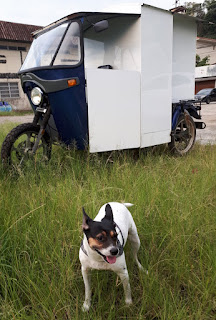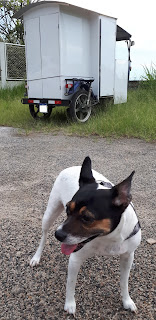Even though passenger transport with tuk-tuks is still quite a taboo in my homeland Brazil, they've been reasonably sought after by entrepreneurs who need an affordable option for short-distance hauling and a small payload in the urban environment where low speed is not a problem at all. While the Piaggio Ape and its many copies usually sourced from India and China are a rare sight in Brazil, it's not so unusual to spot makeshift tricycles converted from small-displacement motorcycles and a small amount of those Chinese purpose-built tricycles with a fully-exposed cockpit or a simple front fairing and roof without a side enclosure. The location of the engine and fuel tank inside the rider's cabin requires it to be open to the environment, and it also applies to the Peruvian passenger-transport models even though they have a canvas enclosure around the rear seat. In this one converted into a panel van, an all-metal cargo box is installed on the rear section, with an all-metal roof also extending over the rider's area which was also fitted with metal half-doors. Unlike other tricycle types which often have both rear wheels driven, and often resort to a shaft-drive the Peruvian-style ones have only the left rear wheel which is chain-driven just like the sole rear wheel of an average motorcycle such as the 125cc and 150cc ones usually resorted as a parts donor for the assembly of tuk-tuks in Peru.


No comments:
Post a Comment
Only comments written in English are published. Not so rigid about the grammar, but some regional slang should be avoided to make it clear and easily understandable.